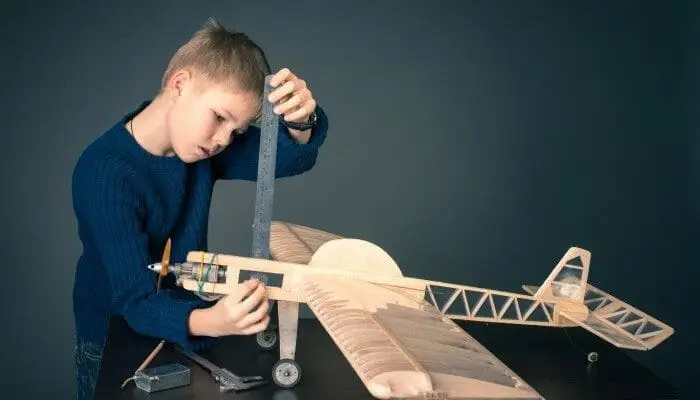As I completed my Montessori Math album, I thought hard about how to encourage early math skills. I reviewed the brain research behind why and how to teach mathematical thinking to young children. I am drawn back to an article written by Mary Schneider of Woodinville Montessori School and MEIPN. She succinctly describes why we cannot “teach” math to young children and how we can support the development of these skills.
Learning math is not about math drills, memorizing facts, or completing worksheets. Nurturing math skills requires experience with observation, comparing, contrasting, and questioning. She offers tangible ways that teachers and parents can encourage the development of logical and critical thinking. Below I share some ideas on How to Encourage Early Math Skills.
“The focus is not on the answer – it’s on how your child gets the answer. This is contrary to the usual way we operate in the adult world, where results are the primary goal to be reached.” ~ Michael Duffy, Math Works
How to Encourage Early Math Skills
Relevance
Make conversation with children within the activities of their daily lives. Asking questions, encouraging observation, and noticing details in their surroundings help develop mathematical skills by helping children create relationships in their world that are not necessarily obvious.
Independence
Encourage children to think on their own and to solve their own problems (read: don't do too much for them). Children can learn to negotiate solutions at a very young age. There is research supporting this point. Allowing a child to problem solve and to think critically ignites the brain's area of most advanced thinking.
Travel & Cooking
Talk about math within everyday life: We're in the car a lot. Lucky for me, our 4.5-year-old has an inclination to ask about time and distance. We also cook together. Using a tablespoon or cup measure boosts these skills, especially if you're being verbal with your child during the experience.
The bonus is that a child might just develop a good sense of “math” in everyday life with money and economics. For example, engaging a child in the grocery store about why two products may have different prices, asking a child to think about why a product is on sale, or gathering enough apples for the whole family goes a long way in a lifetime of learning financial management.
Invite & Support Questions
Encourage children to talk about numbers and ask questions when it is meaningful to them. My son sometimes shies away from asking a question because he already (at 3 years old!) feels the impact of “failure” (gasp!). The importance of creating an environment where being wrong is actually a good thing, something from which to learn, is critical in a child's life.
Include the Child
There are so many opportunities, expanding on the above point, to talk about math in everyday life simply by including a child in “your” tasks and responsibilities. Doctor's appointments are a great place to talk about weight & height, especially when the doctor shows you the growth chart over time.
Other opportunities include meal time {e.g. how many placemats do we need?}, planning a party {e.g. if we want 1 cupcake per guest, how many cupcakes do we need on the plate?), etc are perfect times to discuss quantity with a child. Recently my 3-year-old helped me put away the dishes from the dishwasher.
We counted each utensil (spoons, knives, and forks). He noticed that we had many more spoons than knives. So we created a small graph and talked about why more spoons may be in the dishwasher than knives. Simple but powerful everyday conversations.
Compare & Contrast
Don't always have a child count objects. Have him compare and contrast quantities. For example, “which pile has more blocks?” or “is this train longer or shorter than this train?” Children need to be encouraged to think logically about quantities rather than simply count them.
Sort & Match
The key here is that a child is using REAL objects. This can be done with every day objects like socks, crayons, or utensils, with simple manipulatives like legos and blocks, or with objects from nature like rocks, leaves, and cones. Very easy to integrate this one into your daily routine.
Duration & Passage of Time
Talk about the passage of time and sequence with daily routines like days of the week, seasons, class schedules, and bedtime routines.
Build & Design
Encourage free play with building and pattern blocks, which develops spatial skills and pattern recognition skills, both contributing to the development of mathematical skills. Children can copy designs and make their own designs. Puzzles are a very easy way to bring this one into your home or classroom. I highly recommend Melissa & Doug Pattern Blocks and Boards, MindWare's Pattern Play
, MindWare's Imaginets
, and Twig Blocks
.
Don't Correct
Don't simply correct a child. Observe him and actively participate in the revision of his thinking.
Movement
There is ample scientific research supporting the idea that learning and movement go hand and hand. Brain development depends greatly on it. So, create opportunities for climbing, running, jumping, hopping, balancing, etc. Children need to be active to optimally develop their brains.
Check out the book Brain Gym: Simple Activities for Whole Brain Learning for some creative ideas on combining brain development and movement.
I hope you found this helpful.
Marnie

